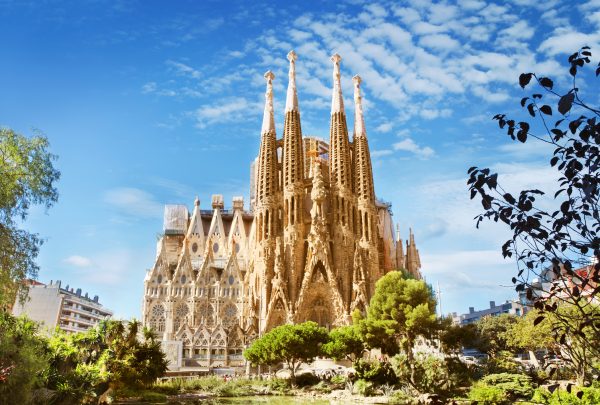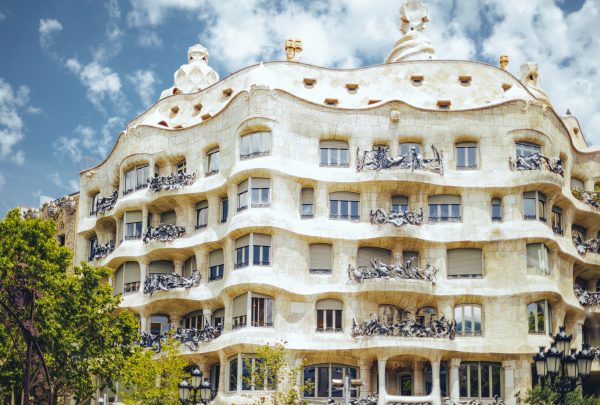
Barcelona has an ancient history – it was established around the 1st century BC by the Romans when a colony named Barcino populated the region. In the medieval period, the city already had strong positions as an economic and political center of the Western Mediterranean. Nowadays Barcelona keeps its leading position as a progressive tourist, economic, trade, and cultural center in Europe. It is the capital of the autonomous community Catalonia and the second most populated city in Spain.
Barcelona is a unique city with a remarkable historic and architectural heritage and home to outstanding artists, fashion designers, and musicians. The city has a strong energy and character and a cosmopolitan feel and look – different nationalities, cultures, ethnicities, and languages mix here. The number of cultural activities in Barcelona is endless with the abundance of theatres, symphony and concert halls, and museums. Exploring the historical and cultural legacy of Barcelona will leave you with an exceptional experience.
Discover Barcelona – beautiful, bewildering, bold and beloved!
Sights & Attractions
La Sagrada Familia

La Sagrada Familia is undoubtedly on top of the “must-see list” of any tourist visiting Barcelona. Its foundation stone was laid in 1882 and it was further designed by the young then architect Antoni Gaudi. A curious fact is that the cathedral is not finished yet. Gaudi himself was convinced that he will not live long enough to complete his masterpiece. Today the building and reconstruction works continue and the goal is La Sagrada Familia to be finished by the year 2026 commemorating the 100th anniversary of Gaudi’s death in 1926.
La Pedrera (Casa Mila)

Another Gaudi’s astonishing piece of work is La Pedrera also known as Casa Mila. It was home to the local businessman Pere Milà. His family occupied the first floor of the building and the rest of the apartments were for rent. Casa Mila was the last civil architecture building designed by Gaudi before his death and turned into an emblem of his work. Its façade is richly ornamented and resembles a stone quarry which is the reason why today it is more popular among the locals as La Pedrera (the stone quarry).
Park Güell

Park Güell has an interesting story. Initially, the land was bought by Eusebi Güell, a renowned wealthy Catalonian entrepreneur and an influential representative of Barcelona’s bourgeoisie. His intention was to turn the place into a high-class residential area, but the project was a commercial failure with only 2 parcels of land sold due to the high prices. After the death of Güell, his heirs donated the park to the city and since then it is the most famous public park in Barcelona. It was designed by Antoni Gaudi and due to the remarkable architecture today it is recognized as an UNESCO World Heritage Object.
Casa Batlló

Gaudi’s handwriting is all over Barcelona and we should also mention Casa Batlló as another remarkable building designed by him in 1877. It was bought by the wealthy Batlló family. In 1904 Josep Batlló decided he wants a unique and outstanding home that no other member of the family could have. He wanted to destroy the whole building and to start from scratch. Gaudi convinced Batlló this was not necessary and only refurbished the building thus turning it into his next masterpiece. The house was kept by the Batlló family by 1954, while today it hosts some important cultural and social events.
Barri Gòtic (The Gothic Neighbourhood)

The Gothic Neighbourhood or Barri Gòtic is in the city center of Barcelona stretching from La Rambla to Via Laietana. The history of the area dates to the Romans. However, most of the remains and the buildings in the quarter do not date to the Middle Ages as the city had undergone multiple invasions. Nowadays the quarter is completely restored and turned into a tourist attraction.
La Rambla

La Rambla (often called also Las Ramblas) is Barcelona’s iconic central street, located between the Gothic and Raval Neighbourhoods. In fact, it is not one but five streets in succession which form a 1.2 km long boulevard, in the middle of which is the main city square Plaça de Catalunya. La Rambla is an important trade centre as well as a famous public and social meetings gathering point.
Mercat de la Boqueria

While you are in the area of Las Ramblas, make sure to visit this bustling food market, iconic for Barcelona. Mercat de la Boqueria offers a great variety of fresh products, but the main reason to visit is to sample the rows of small tapas bars. Come hungry and enjoy the feast on local dishes and sangria!
Port Olimpic & The Coastline

If you want to spend a few hours enjoying the Mediterranean coastline, there are a handful of beaches in the city, as well as in the surrounding. Sun loungers are available to rent or you can relax at one of the many chiringuitos (small beachside restaurants) and soak up the afternoon sun.
Getting Around the City
Barcelona and its metropolitan area have a wide range of public transport and sightseeing transport options. There are different ticket types so that you can get to where you want to go in Barcelona easily and conveniently. The city bursts with exciting opportunities, visit the following website for information about the different transportation services and their cost. If you choose to hop on and off the Bus Turistic you can learn more its route and make a reservation here.
